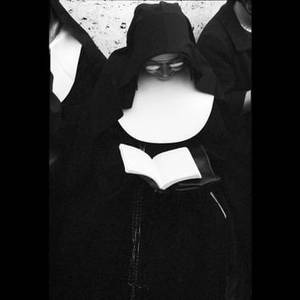The portraits and landscapes of Italian life during 1964, primarily of Rome but also of the South and Sicily, give us a glimpse into the heart of a country at the cusp of profound industrial and political change.
You chose: photos
-
-
The powerful visual narrative of the life of writer and photographer Giuseppe Di Piazza. A childhood in Palermo. A career in Rome and, later, Milan. Close ties to New York and “Italian” America. But there’s more to him than that, as can be seen in his "Landscapes"— on display at NYU’s Casa Italiana Zerilli-Marimò starting next week, Thursday, April 20th—and in his singular portraits of women…
-
When she looks back at her life, Lisetta Carmi maintains that, at 92, she has already lived five. The drawing of her made by her spiritual guide, Babaji Herakhan Baba, was right. Each one of the five faces portrayed among lotus flowers, represents a different life, ranging from that of the musician, the photographer, the community leader, the reborn musician and the silent bystander. Above all, Lisetta Carmi is known as a photographer whose work has been compared to Henri Cartier Bresson's.
-
On Wednesday September 3rd, Italian fine art and fashion photographer Alexo Wandael is launching his latest project, ITALIANY at Casa Italiana Zerilli-Marimò
-
Introducing "Lacedonia: Un paese Italiano, 1957/An Italian Town, 1957," Frank Cancian’s photographs of Lacedonia (AV), repackaged for a new century.
-
Introducing "Lacedonia: Un paese Italiano, 1957/An Italian Town, 1957," Frank Cancian’s photographs of Lacedonia (AV), repackaged for a new century.
-
Bon voyage at Casa Italiana Zerilli Marimò with this special collection of photographs On view through April 29, 2013, Mon-Fri 10-5. The opening event will feature a performance by the NYU Madrigal Singers
-
On Thursday, December 10 the Leica Gallery held the opening reception for Variatio, a new bimonthly magazine dedicated to photographic art. Professor Renato Miracco, editor-in-chief of Variatio, explains why he wanted to open the first issue with a quote from Robert Frank, an artist whose work is currently on display at the Met
-
Is there an “authentic” Little Italy, and if there is, what does it look like? To the first part of the question, I say "No." The second part is more complex, as Italian neighborhoods real and imagined, are presented as spectacles for tourists and unfortunately are seen as representations of “real” Italian Americans.






































